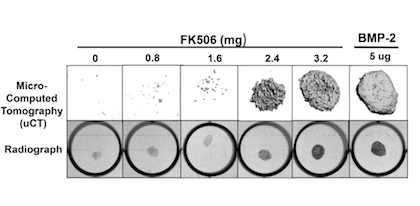The natural processes of wound or bone healing rely on the growth of new blood vessels, or angiogenesis. If someone breaks a bone, it is standard practice to apply a cast and immobilize the broken bone, so that healing can proceed without mechanical distortion. Additionally, there currently are options like dry needling therapy that can assist in keeping the healing process pain free.
After those initial stages of healing, applying surprising amounts of pressure can encourage angiogenesis, according to a new paper in Science Advances from biomedical engineer Nick Willett’s lab.
“These data have implications directly on bone healing and more broadly on wound healing,” Willett says. “In bone healing or grafting scenarios, physicians are often quite conservative in how quickly patients begin to load the repair site.”
Willett’s lab is part of both Emory’s Department of Orthopedics and the Wallace H. Coulter Department of Biomedical Engineering at Georgia Tech and Emory, and is based at the Atlanta Veterans Affairs Medical Center.






